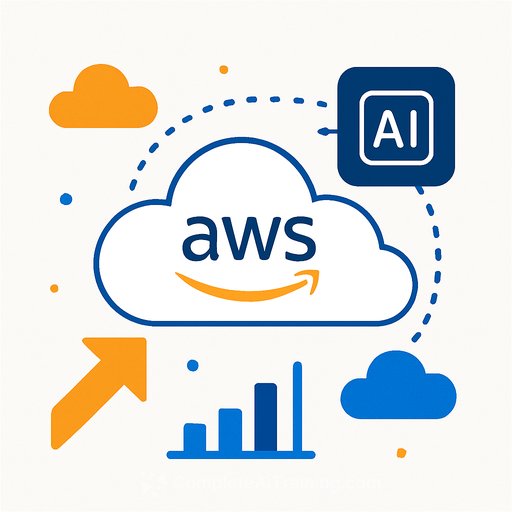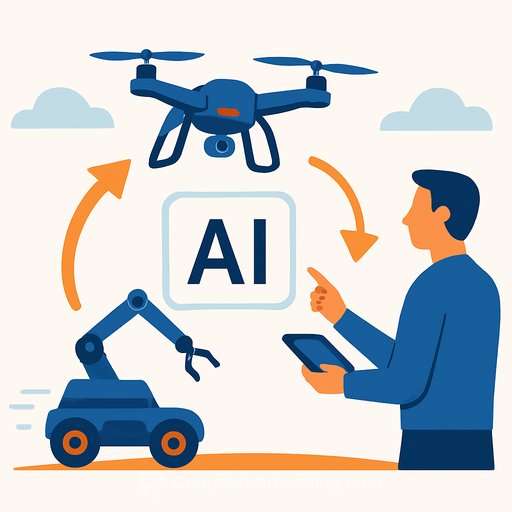AI-Driven Manufacturing in 2026: Configit's Take on Configuration, Knowledge, and the Data Foundation You'll Need
2026 won't be about pilots or proofs of concept. It will be the year AI sits inside the core of manufacturing operations-configuration, knowledge capture, PLM, ERP, CPQ, and service-all sharing the same truth so decisions get made faster and with fewer surprises.
That's the trajectory outlined by Configit's executive team. The signal is clear for managers and product development leaders: build a connected data foundation, digitize tribal knowledge, and move from engineer-to-order to a smarter, scalable configure-to-order approach.
At a glance
- Retirements will force a sprint to digitize tribal knowledge-especially configuration and engineering rules.
- PLM, ERP, CPQ, and service will work from a shared source of truth to keep promises aligned with what can be built.
- AI-driven productivity will speed the shift from ETO to CTO across discrete manufacturing.
Why this shift is happening now
Two pressures are colliding. Veteran experts are leaving, taking decades of configuration logic and production tricks with them. At the same time, customers want more personalization with shorter lead times.
Fragmented data and disconnected systems make both problems worse. That's why manufacturers are investing in integrated PLM-ERP-CPQ stacks, data interoperability, and reliable configuration logic-so AI can do more than generate ideas and actually improve throughput.
Seven predictions for 2026
1) AI becomes embedded in configuration and everyday operations
Expect tighter connections across design, production, and sales systems. Configuration will get more predictive-surfacing options that are market-relevant and feasible to build. This isn't "nice to have." It's how teams will cut decision time and reduce costly rework. (Sigrún Ívarsdóttir, Configit)
2) A race to capture institutional knowledge
Manufacturers will accelerate efforts to extract and digitize know-how from specs, BOM variants, CAD notes, and service logs. AI will help turn that unstructured material into usable rules, constraints, and guides for future teams. The goal: prevent knowledge loss and make configuration logic maintainable. (Ívarsdóttir; Daniel Joseph Barry, Configit)
3) Cross-divisional alignment becomes the default
PLM and ERP/CPQ will be integrated so engineering, manufacturing, sales, and service use the same product and configuration data. That alignment keeps quotes realistic, schedules reliable, and changes synchronized with what can actually be built and serviced. (Ívarsdóttir)
4) Data interoperability turns into a competitive advantage
Companies that align systems and data across the product lifecycle will scale AI faster and with fewer errors. Expect a push for common data models, consistent variant logic, and event-driven integrations across PLM, ERP, MES, and CPQ. (Ívarsdóttir)
5) Reliable data foundations become the new edge
As executives push for efficiency, many will discover misaligned data sources, brittle integrations, and duplicated logic. The fix starts with connected systems, connected data, and connected logic-then layering AI on top. Watch metrics like configuration error rate, data freshness, and quote-to-order time. (Barry)
6) Configuration gets redefined-modeling and execution both change
AI will help convert paragraphs, diagrams, and tables into product models and rules, cutting model creation time and making it easier for product managers to maintain them. On the execution side, users will describe what they need in plain language, and AI will assemble valid configurations-potentially coordinating with supplier systems through agent workflows. Add governance from day one: audit trails, rule provenance, and approval workflows. (Henrik Hulgaard, Configit)
7) Discrete manufacturing gains new levels of efficiency
Teams will translate market feedback into refined offerings faster, streamline BOM management, and speed up configuration model creation and validation. As organizations move from ETO to CTO, AI-driven tools will reduce manual effort and shorten lead times while keeping customization viable at scale. (Laura Beckwith, Configit)
What this means for managers and product development leaders
If you're accountable for product strategy, profitability, or delivery, treat 2026 as the year your configuration stack becomes a core business system-governed, measured, and continuously improved. Here's a practical plan.
Your 90-180 day action plan
- Map the configuration stack: Document where rules live today (PLM, ERP, spreadsheets, minds of experts). Identify duplicates and contradictions.
- Integrate PLM ↔ ERP/CPQ: Sync BOMs, options, constraints, and effectivity. Start with your top product family and expand.
- Digitize tribal knowledge: Stand up a program to extract rules from specs, CAD notes, and service logs. Use AI to draft; experts review and approve.
- Adopt a common data model: Normalize variant logic and option naming across systems. Set clear ownership for each data domain.
- Governance first: Add approval workflows, audits, and testing for every configuration change. Track error rates and quote fallout.
- Pilot AI for modeling: Feed documents to generate draft rules. Measure time saved to create and validate models.
- Introduce natural-language configuration: Start with internal users (sales engineering) before exposing to customers.
- Measure what matters: Quote-to-order cycle time, first-pass yield, configuration error rate, change lead time, and model coverage.
- Upskill the team: Train product managers and engineers on AI-assisted modeling and configuration workflows. Curate role-based courses that fit your stack. See AI courses by job.
Key principles to keep you on track
- Single source of truth: One set of options, rules, and constraints shared across engineering, sales, manufacturing, and service.
- Event-driven syncs: Changes in PLM should trigger updates in ERP/CPQ automatically with validations.
- Explainability: Every AI-generated rule needs traceability back to a source document and a human approver.
- Data quality as a KPI: Treat data freshness, consistency, and coverage like you would throughput or scrap rate.
Further reading
- NIST AI Risk Management Framework for governance and risk controls that fit industrial use cases.
- CIMdata: What is PLM? for a clear view of PLM's role in product and configuration data.
The bottom line
AI will sit inside configuration, knowledge capture, and cross-functional workflows in 2026. The winners will build connected data and logic, align PLM with ERP/CPQ, and make configuration explainable and auditable.
Start small, move fast, and measure relentlessly. The sooner your data is clean and connected, the sooner AI starts paying off where it counts-fewer errors, faster quotes, and products customers actually want.
Your membership also unlocks:










